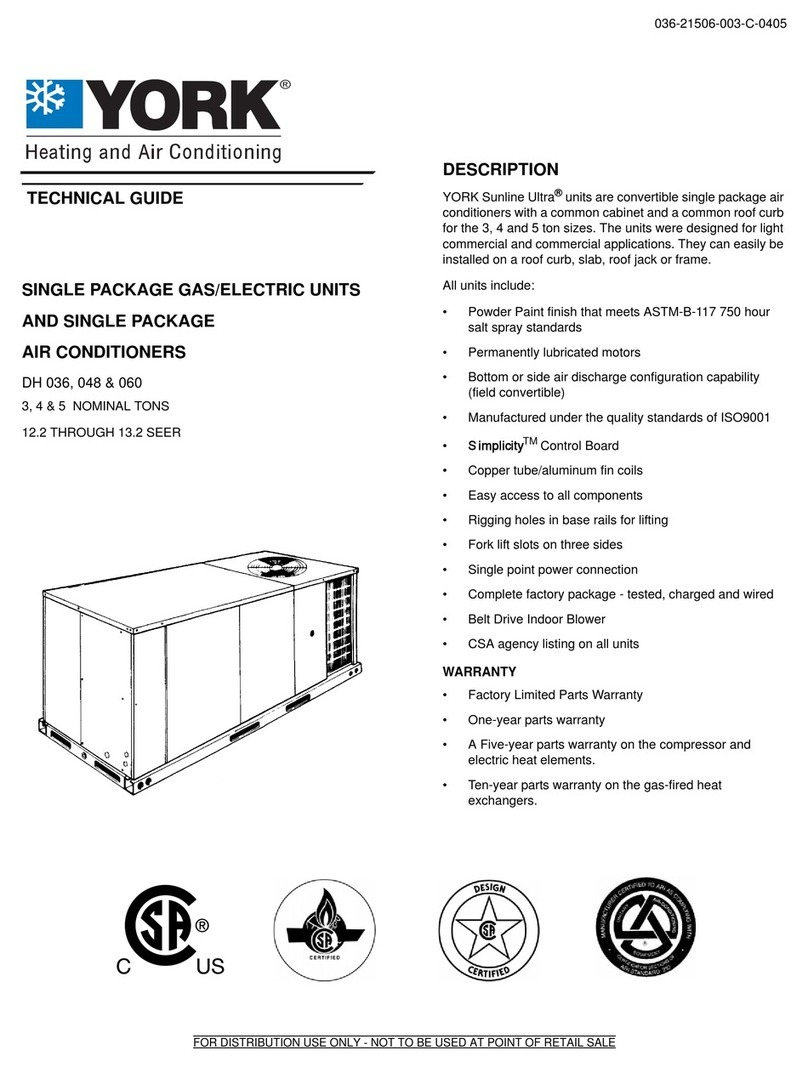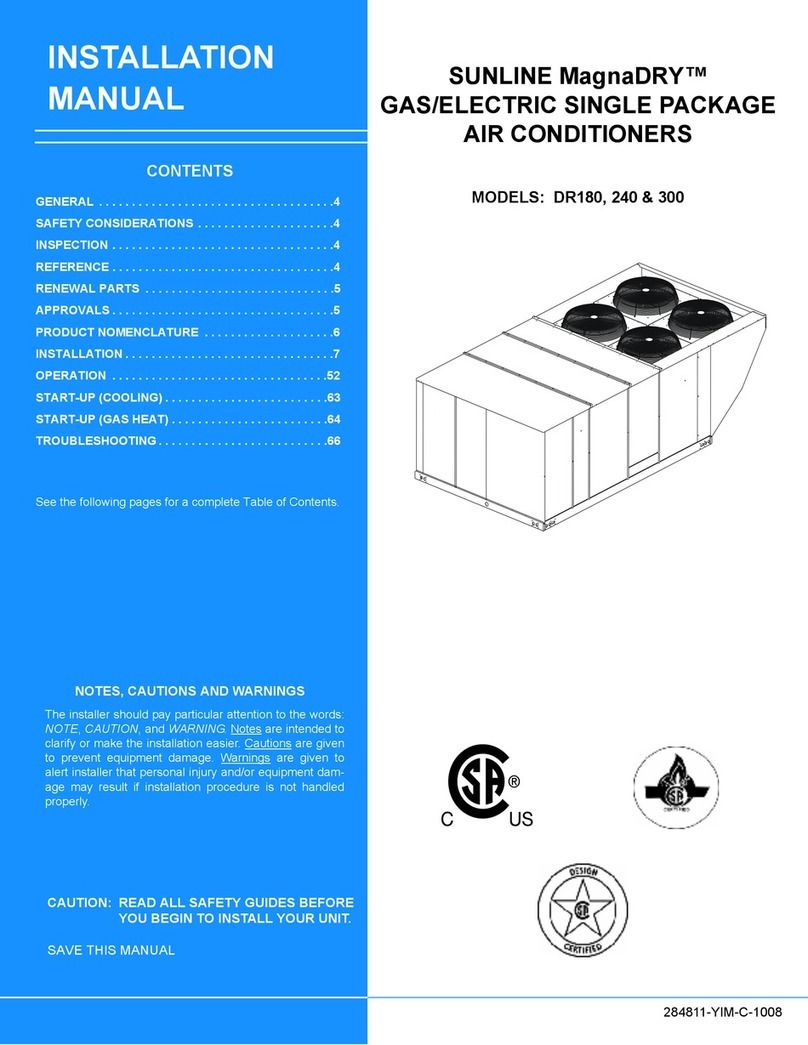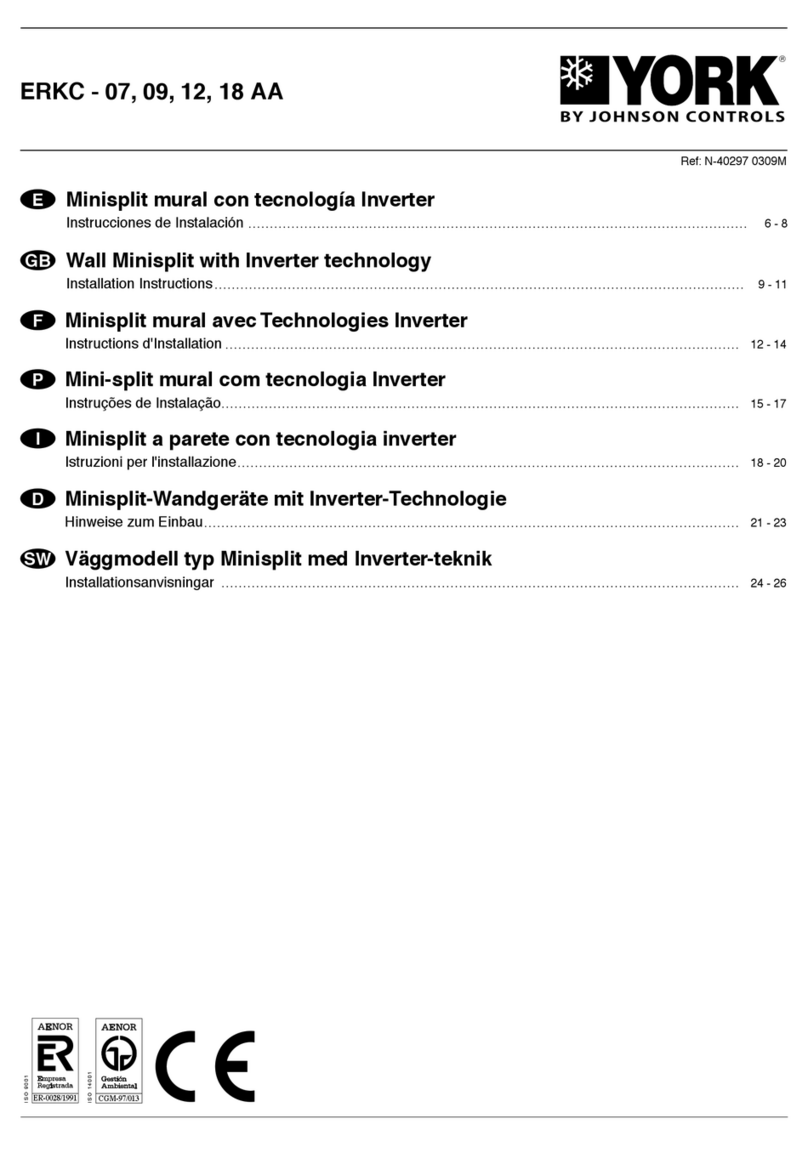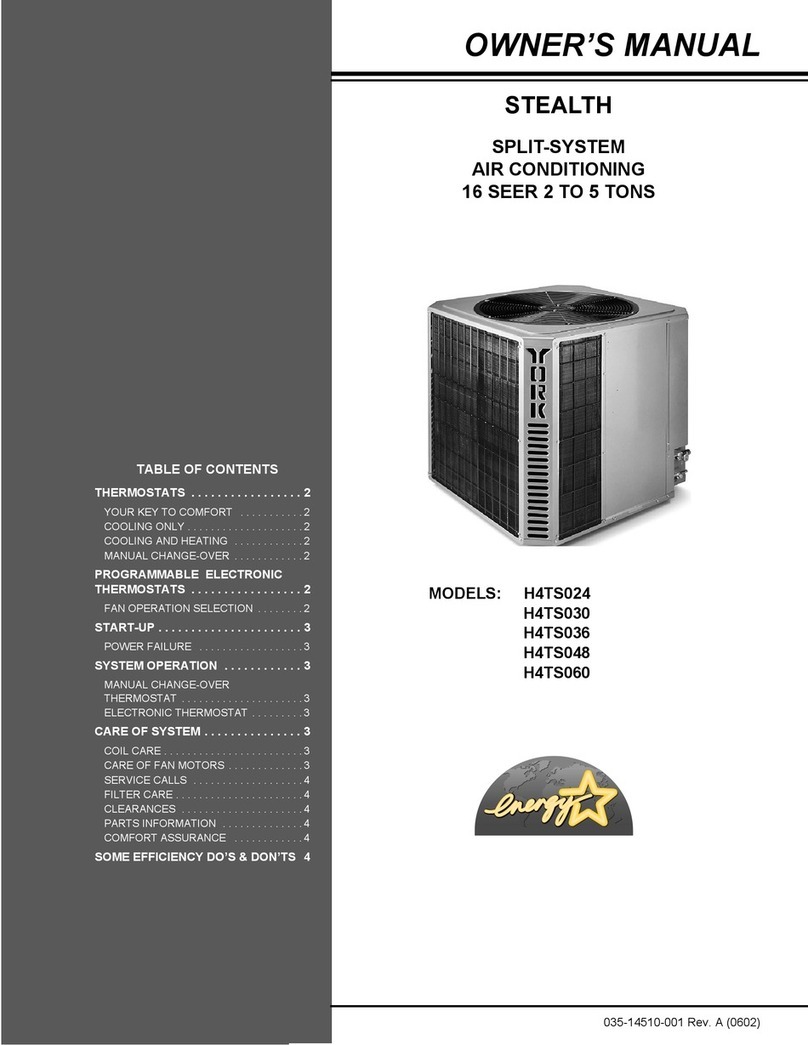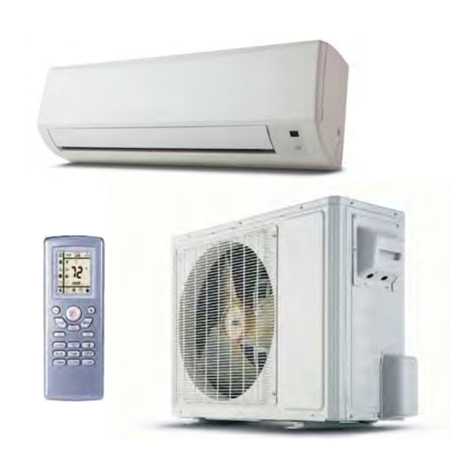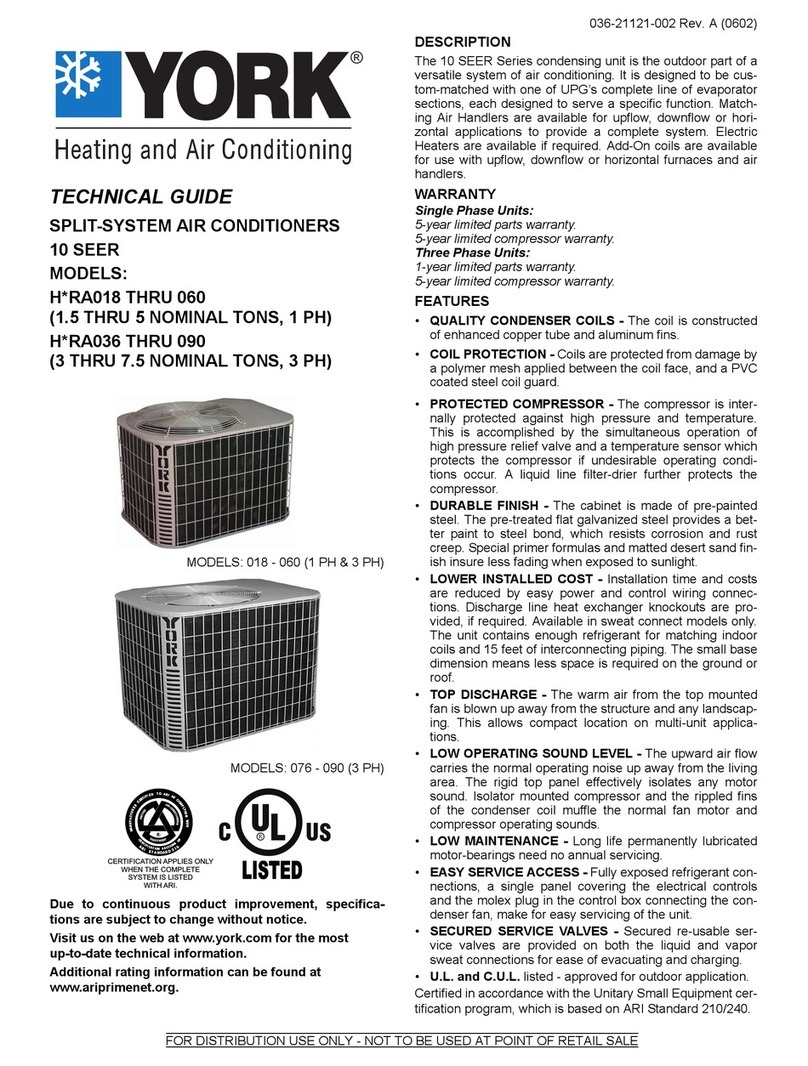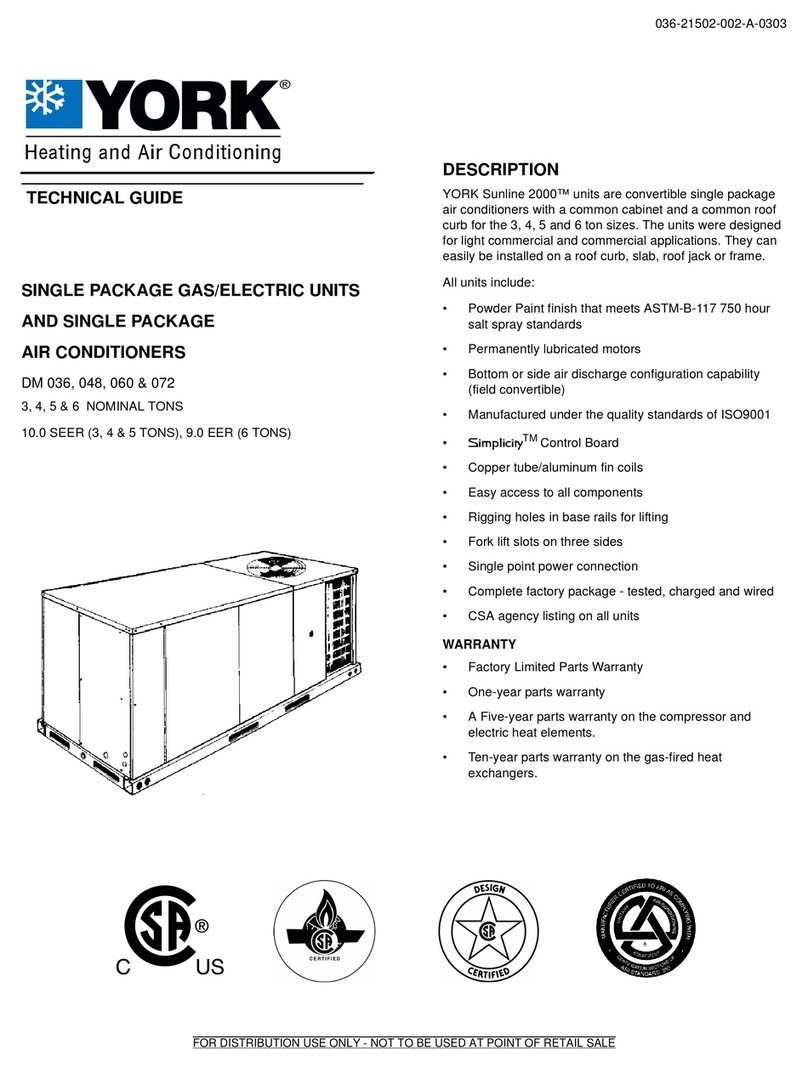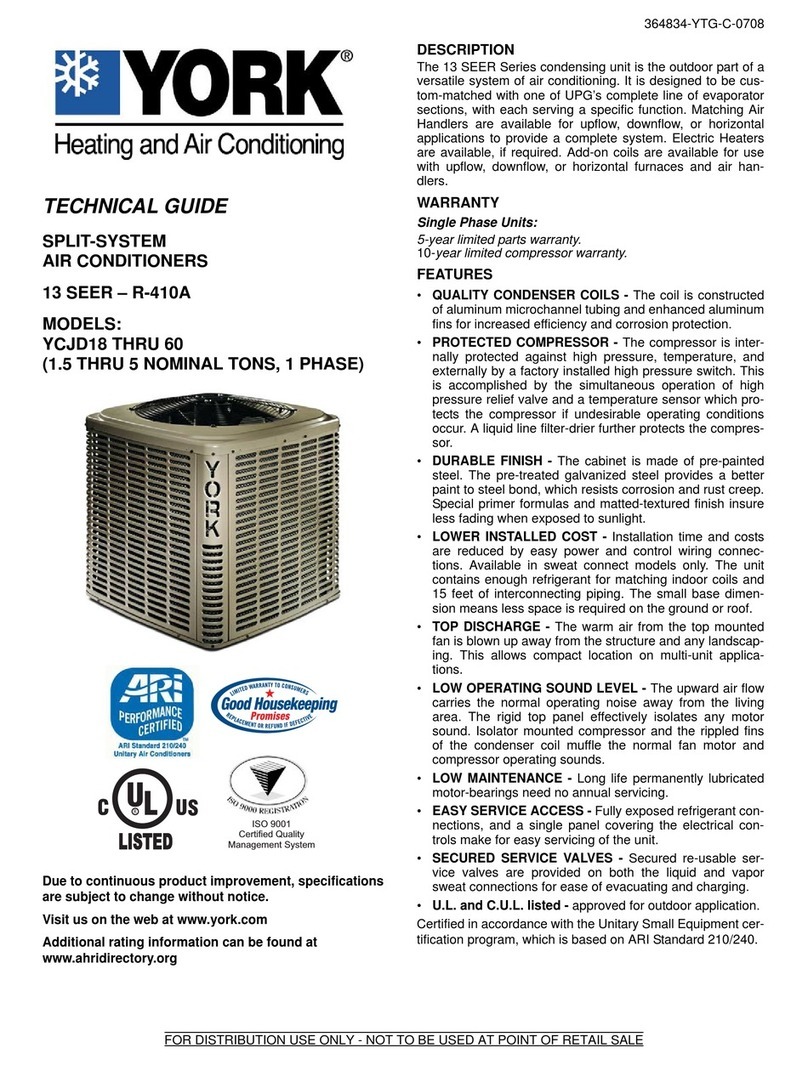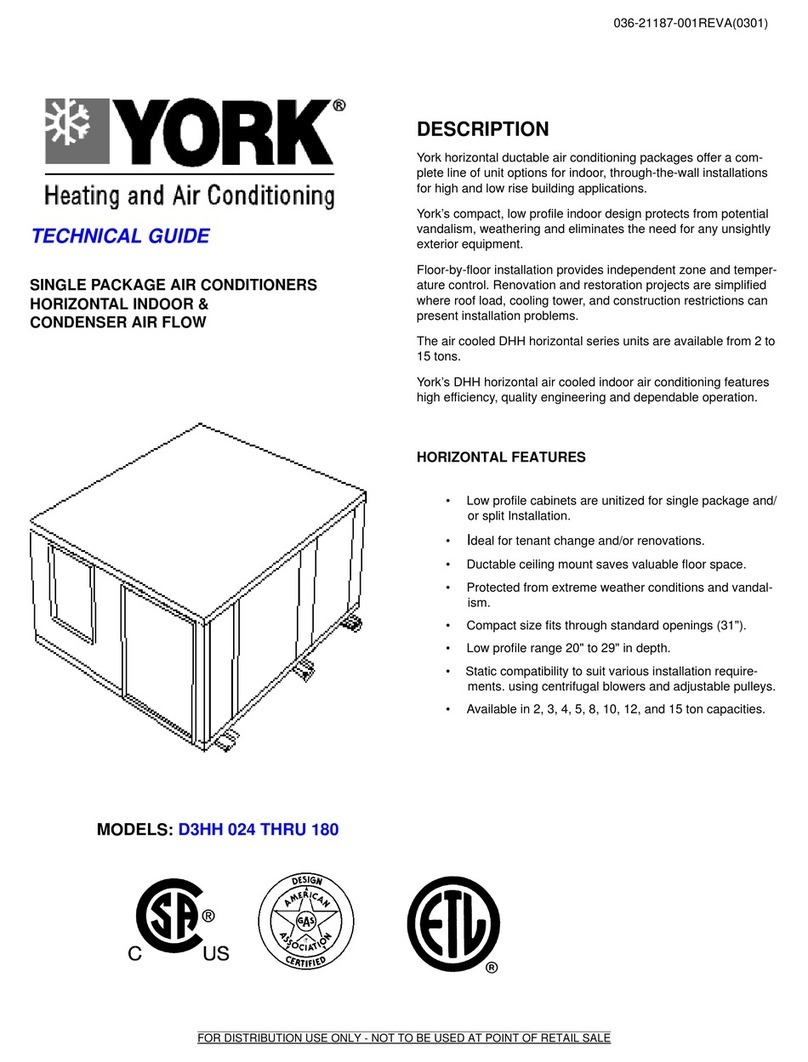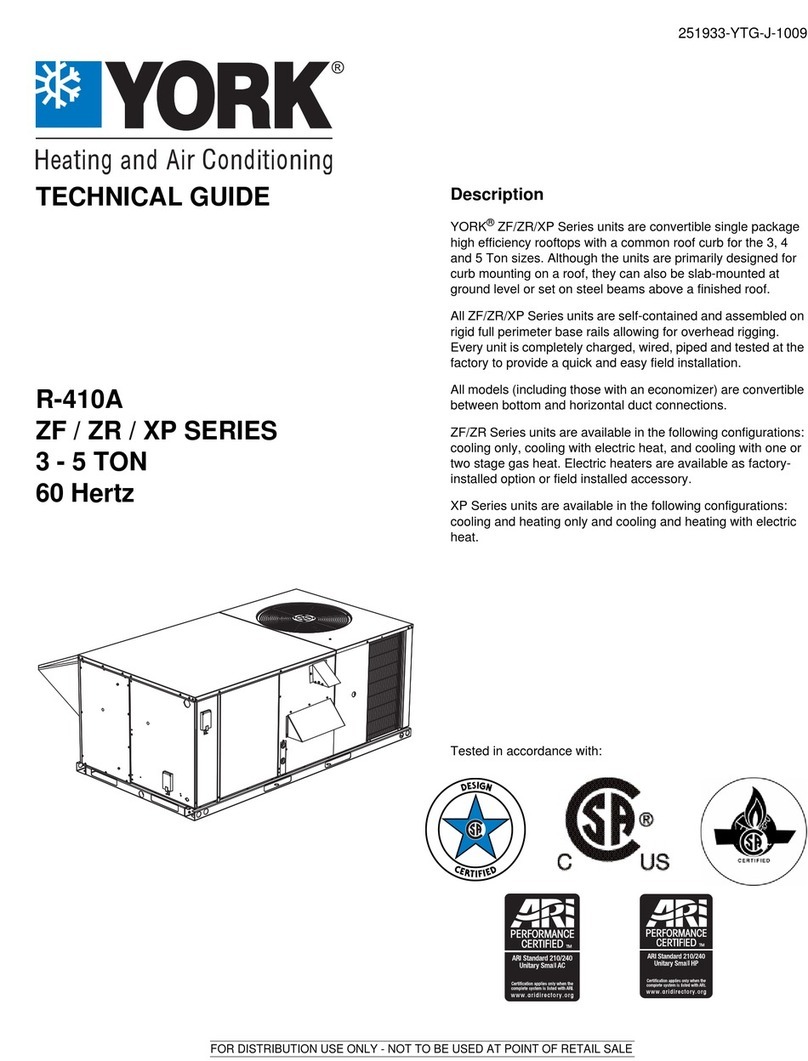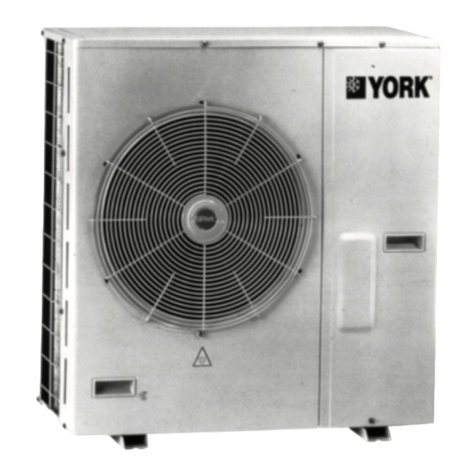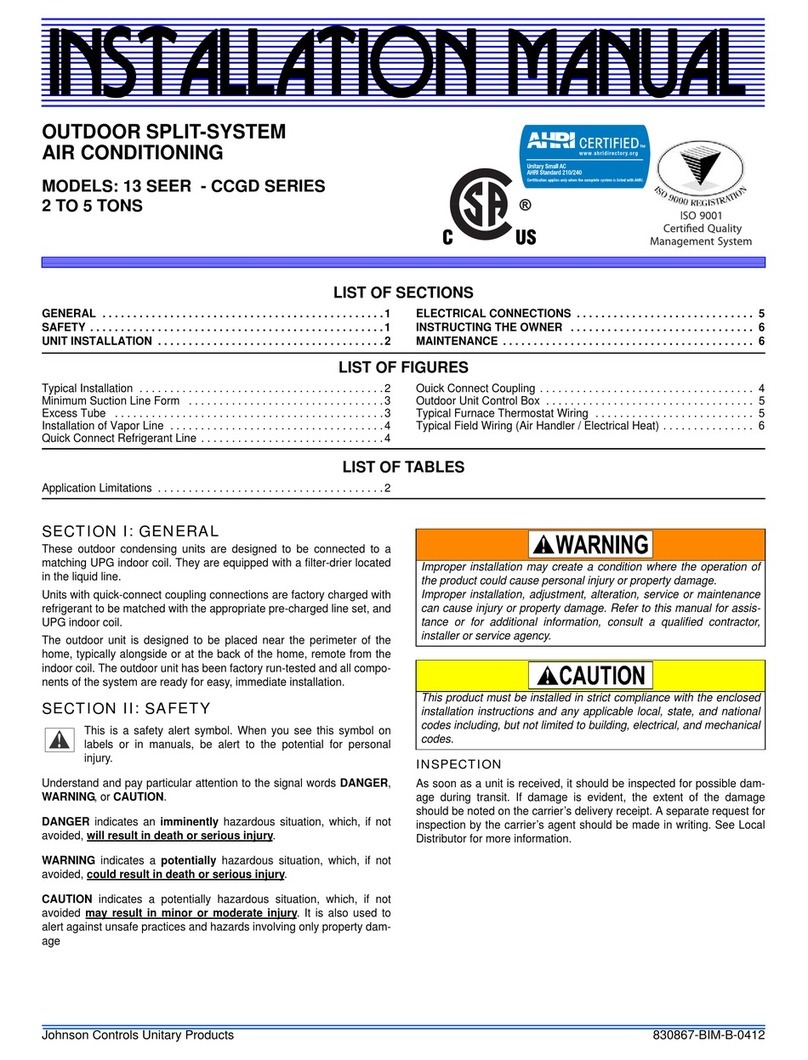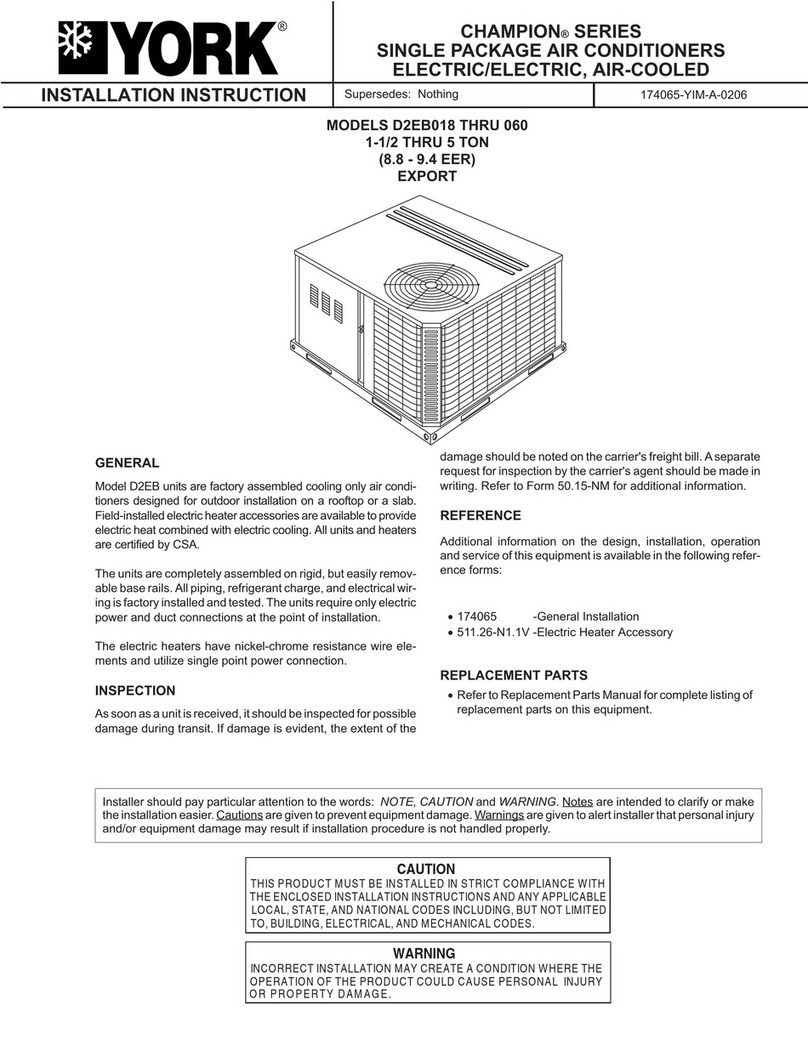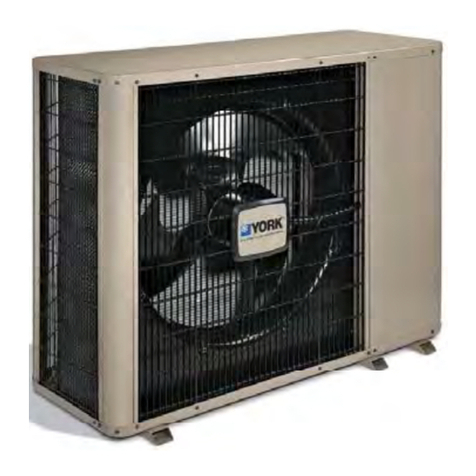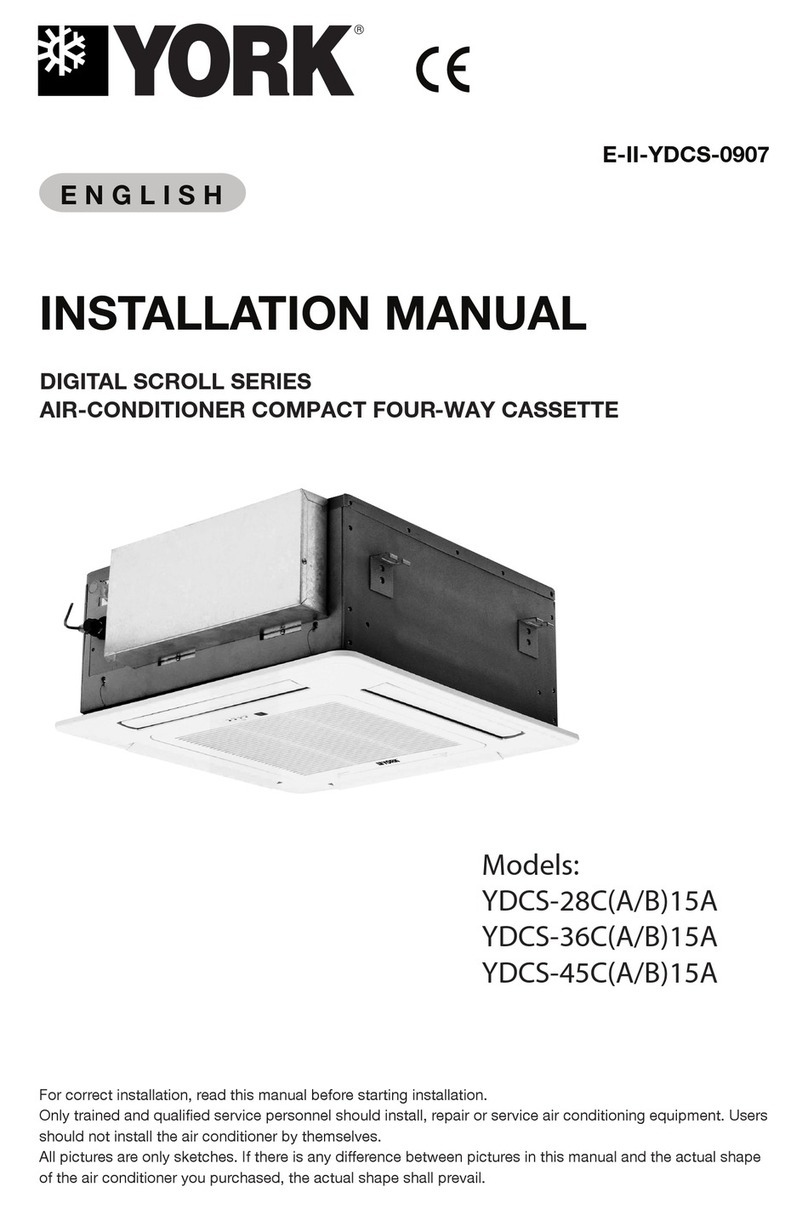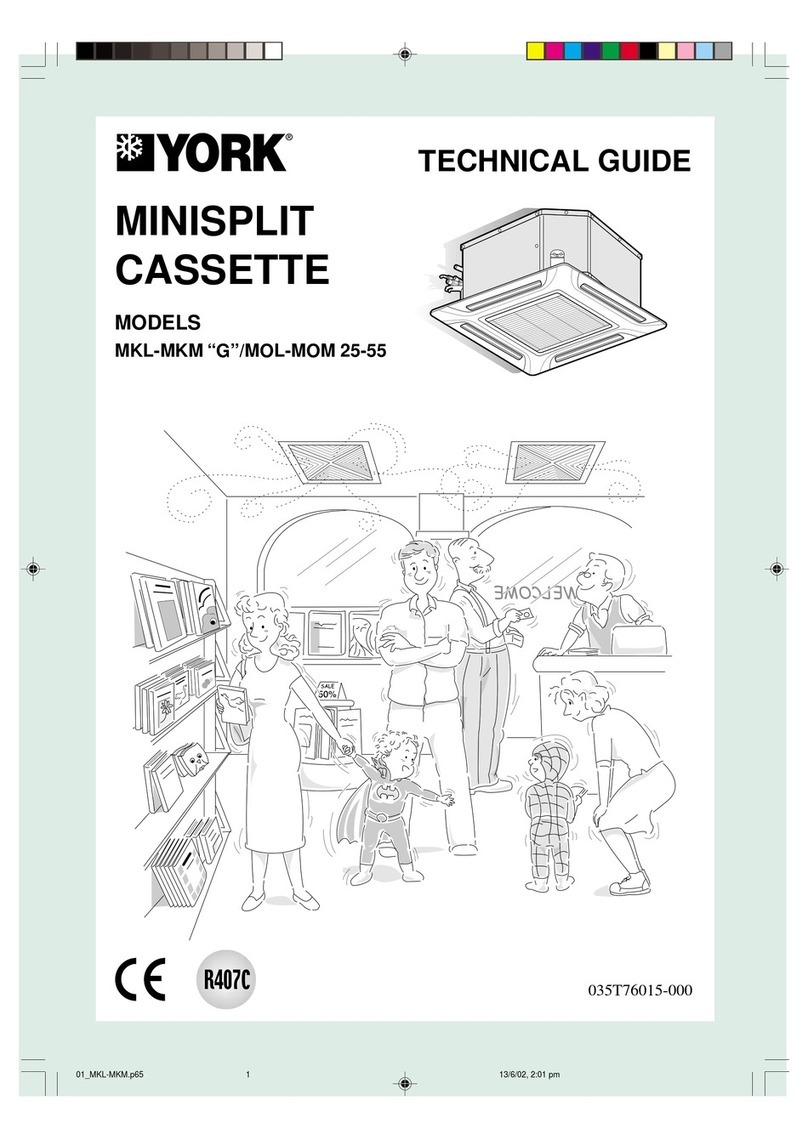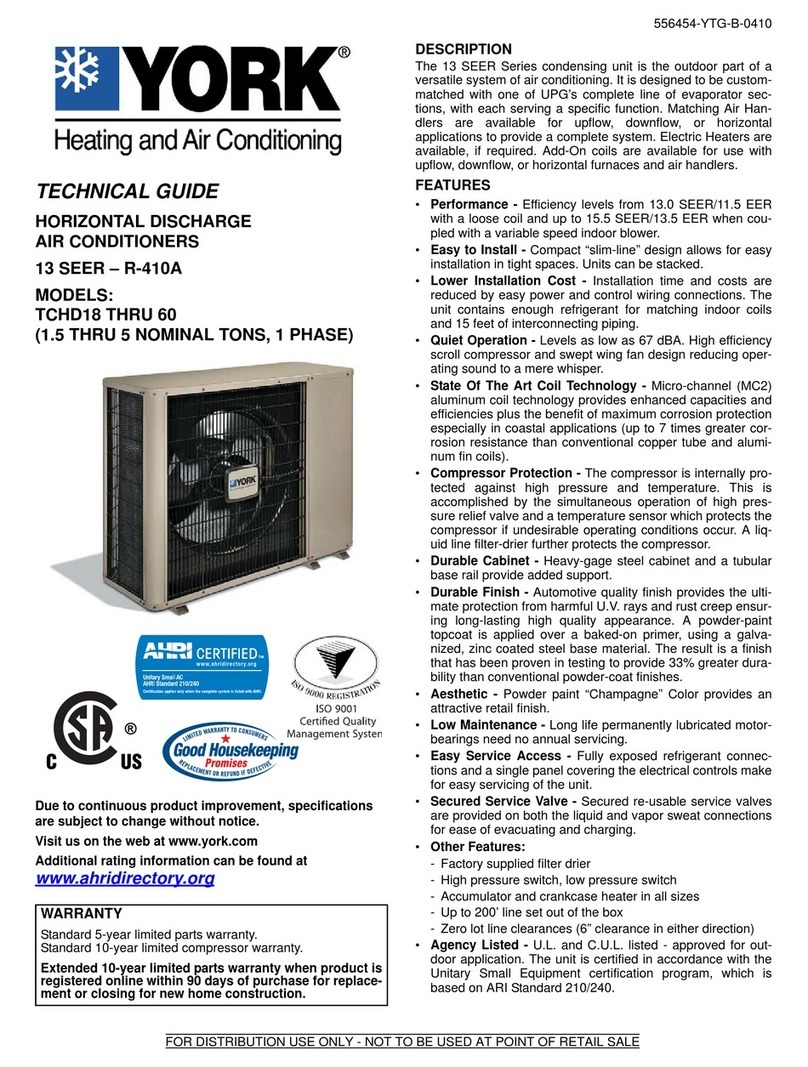
035-16399-001 Rev. B (101)
Unitary Products Group 5
PRECAUTIONS DURING BRAZING OF LINES
The outdoor units have re-usable service valves on both the
liquid and vapor connections. The total system refrigerant
charge is retained within the outdoor unit during shipping and
installation. The re-usable service valves are provided to
evacuate and charge per this instruction.
Serious service problems can be avoided by taking adequate
precautions to assure an internally clean and dry system.
PRECAUTIONS DURING BRAZING ANGLE VALVE
Precautions should be taken to prevent heat damage to angle
valve by wrapping a wet rag around it. Also, protect all
painted surfaces and insulation during brazing. After brazing -
cool joint with wet rag.
Valve can be opened by removing the plunger cap and fully
inserting a hex wrench into the stem and backing out counter
clockwise until valve stem just touches retaining ring.
Replace plunger cap finger tight, then tighten an additional 1/
12 turn (1/2 hex flat). Cap must be replaced to prevent leaks.
Connect the refrigerant lines using the following procedure:
1. Remove the cap and Schrader core from both the liquid
and vapor angle valve service ports at the outdoor unit.
Connect low pressure nitrogen to the liquid line service
port.
2. Braze the liquid line to the liquid valve at the outdoor unit.
Be sure to wrap the valve body with a wet rag. Allow the
nitrogen to continue flowing.
3. Carefully remove the end caps from the evaporator liquid
and vapor connections using a standard tube cutter.
4. Braze the liquid line to the evaporator liquid connection.
The nitrogen should now be flowing through the evapo-
rator coil.
5. Slide the grommet away from the vapor connection at
the coil. Braze the vapor line to the evaporator vapor
connection. After the connection has cooled, slide the
grommet back into original position.
6. Protect the vapor valve with a wet rag and braze the
vapor line connection. The nitrogen flow should be exit-
ing the system from the vapor service port connection.
After this connection has cooled, remove the nitrogen
source from the liquid fitting service port.
7. Evacuate the vapor line, evaporator and the liquid line, to
at least 500 microns.
8. Leak test all refrigerant piping connections including the
service port flare caps to be sure they are leak tight. DO
NOT OVERTIGHTEN (between 40 and 60 inch - lbs.
maximum).
NOTE: Do not use the system refrigerant in the outdoor unit
to purge or leak test.
9. Do not remove the flare caps from the service ports
except when necessary for servicing the system.
10. Release the refrigerant charge into the system. Open
both the liquid and vapor valves by removing the plunger
cap and with an allen wrench back out counter-clockwise
until valve stem just touches retaining ring. Release the
refrigerant charge into the system. See "Precautions
During Brazing Angle Valves" on page 5.
11. If the refrigerant tubing, indoor evaporator coil or outdoor
condensing unit has developed a leak during shipment,
or was, for any other reason, opened to the atmosphere
for more than four (4) minutes, it is necessary to evacu-
ate the system down to at least 500 microns to eliminate
contamination and moisture in the system.
If a leak is suspected, leak test to locate the leak. To verify
the leak, close the valve to the vacuum pump suction to iso-
late the pump and hold the system under vacuum. If the
micron gauge indicates a steady and continuous rise after a
few minutes, it's an indication of a leak. If the gauge shows a
rise, then levels off after a few minutes and remains fairly
constant, its an indication that the system is leak free, but still
contains moisture and may require further evacuation if the
reading is above 1000 microns.
See "System Start Up" section for checking and recording
system charge.
If visual verification of the valve stem reaching
the retaining ring is impossible, stop backing out
the valve stem when the slightest increase in
resistance is felt. Because of the small size and
therefore the reduced resistance, back out the
liquid valve 5 turns maximum to prevent going
past the retaining ring.
This is not a back seating valve. The service
access port has a valve core. Opening or closing
valve does not close service access port.
If the valve stem is backed out past the retaining
ring, the O-ring can be damaged causing leakage
or system pressure could force the valve stem
out of the valve body possibly causing personal
injury. In the event the retaining ring is missing,
do not attempt to open the valve.
The evaporator is pressurized.
Do not connect manifold gauges unless trouble is
suspected. Approximately 3/4 ounce of refriger-
ant will be lost each time a standard manifold
gauge is connected.
